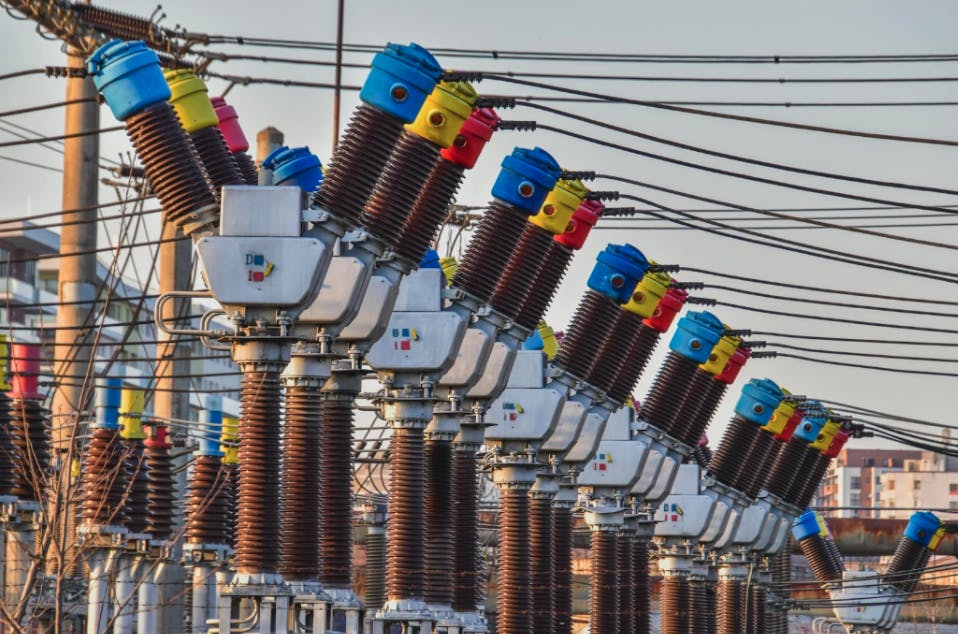Photo by Diana from Pexels
As today’s technology-driven economy accelerates, a reliable and efficient power supply is paramount for various development projects, from software laboratories to expansive data centers. Transformers are essential components in electrical systems because they ensure that equipment receives the correct voltage. Understanding standard transformer sizes is vital for developers to achieve project efficiency, reliability, and scalability.
According to the energy authority International Energy Agency or IEA, global electricity consumption by data centers reached approximately 460 terawatt-hours (TWh) as of 2022 and is projected to exceed 1,000 TWh by 2026, highlighting the tech sector’s increasing power demands.
To scale projects effectively, developers need a clear grasp of standard transformer sizes, their operational mechanics, and diverse applications, particularly within tech and software development environments.
What Are Standard Transformer Sizes and How Do They Work?
A transformer is an electrical device or apparatus that transfers energy between circuits through electromagnetic induction, either increasing (stepping up) or decreasing (stepping down) voltage levels. This process involves two or more coils, known as windings. These are wound around a common magnetic core. The transformer’s capacity is indicated by its kilovolt-ampere (kVA) rating, a critical factor in selecting the appropriate unit for any application.
Transformers are broadly categorized into single-phase and three-phase types, depending on the power system they are designed for. Single-phase transformers are common for lighter loads, while three-phase units are standard for industrial and commercial applications requiring more substantial power.
Standard transformer sizes refer to readily available, commonly manufactured kVA ratings. These standardized ratings, such as 15 kVA, 75 kVA, 150 kVA, 500 kVA, and 1,000 kVA, offer practical options that simplify the selection process, promote compatibility across systems, and allow easier replacement or augmentation without significant system modifications.
Common Standard Transformer kVA Sizes and Typical Applications
| kVA Rating | Typical Applications in Tech Environments |
| 3-15 kVA | Small office IT closets, individual lab benches, point-of-sale systems |
| 30-75 kVA | Small server rooms, networking equipment clusters, and medium-sized office floors |
| 112.5-300 kVA | Medium-sized data centers, extensive development laboratories, and primary power distribution for office buildings |
| 500-1,000+ kVA | Large data centers, campus-wide power distribution networks, and high-performance computing clusters |
Applications in Various Industries, Including Tech and Software Development
Transformers are fundamental components across multiple sectors, including manufacturing, healthcare, commercial construction, and higher education facilities, where a consistent and high-quality power supply is essential. These industries use transformers to convert utility-supplied power into appropriate voltages for specific equipment and building utilities, ensuring smooth and efficient operations.
The current global transformer market is projected to reach USD 89.34 billion by 2030, reflecting its sustained importance.
The demand for robust power solutions is particularly acute within the technology industry, especially for data centers that form the backbone of the growing digital economy. These facilities have been found to consume vast amounts of electricity and continuously require exceptionally stable power to operate servers, storage, and networking equipment.
Recent industry developments underscore this need. For instance, Hitachi Energy has announced investments of over $1.5 billion to boost its global transformer manufacturing capacity to meet growing demand.
Practical Tips for Integrating the Right Transformer Size
Selecting an appropriately sized transformer is crucial for any electrical system, impacting safety, efficiency, and operational longevity. An undersized transformer can become overloaded, leading to overheating and premature failure. Conversely, an oversized transformer represents unnecessary capital investment and can operate inefficiently at lower load levels.
To calculate the required kVA for a single-phase transformer:
kVA = (Volts × Amps) / 1,000
For three-phase systems:
kVA = (Volts × Amps × √3) / 1,000
When planning electrical infrastructure, developers should assess load calculations and align them with standard transformer sizes to ensure optimal efficiency and future scalability. Choosing the wrong size can result in system imbalances, increased operational costs, or equipment failure.
It’s essential to consider several key factors:
- Future Expansion: Select a transformer that can accommodate projected growth.
- Load Type: Resistive, inductive, or non-linear loads affect sizing and performance.
- Start Factor: Equipment with high inrush currents (e.g., motors) may require a transformer rated 125 percent or higher of the running load.
- Environmental Conditions: Temperature, humidity, and altitude can influence performance and lifespan.
- Power Factor: This is typically around 0.8 for many applications, essential when converting kilowatts (kW) to kilovolt-amperes (kVA).
By carefully evaluating these parameters and referring to industry-aligned sizing guides, developers can prevent costly oversights and ensure safe, efficient power distribution tailored to their specific operational requirements.
Latest Innovations in Transformer Design
The transformer industry is experiencing significant innovation, driven by the need to modernize the electrical grid, integrate renewable energy sources, and meet stringent energy efficiency demands.
- Solid-State Transformers (SSTs): SSTs are emerging as a promising alternative to conventional transformers. They incorporate power electronic converters and operate at higher frequencies, resulting in smaller, lighter, and more efficient units. SSTs offer advanced functionalities such as bidirectional power flow, which is beneficial for integrating distributed energy resources like solar PV and battery storage.
- Amorphous Metal Transformers (AMTs): AMTs utilize amorphous steel alloys for their cores, significantly reducing no-load losses compared to traditional silicon steel. Studies indicate that AMTs can cut these losses by up to 70 percent, enhancing overall efficiency.
- Eco-Friendly Insulating Fluids: There’s a growing trend toward using biodegradable insulating fluids. Ester-based insulating fluids, being biodegradable and possessing higher fire points than traditional mineral oils, enhance transformer safety and reduce environmental impact over their lifecycle.
Impact on Energy Consumption, Cost-Effectiveness, and Environmental Sustainability
Efficient transformer selection directly impacts energy consumption, operational costs, and environmental sustainability. While generally efficient, transformers incur energy losses in the form of heat, primarily through no-load losses in the core and load losses in the windings. Given the many global transformers, even minor efficiency improvements can yield substantial cumulative energy savings.
Transformer losses can account for an estimated 5 percent of all electricity generated worldwide. Minimizing these losses through advanced designs and proper sizing is crucial, especially in the energy-intensive technology sector.
From a cost-effectiveness standpoint, well-chosen transformers reduce electricity bills and maintenance costs, particularly for tech companies managing large data centers. High-quality, efficient transformers often have longer operational lifespans, reducing replacement frequency and associated costs.
Adopting modern, efficient transformers contributes to sustainability efforts. Reduced energy consumption means a minimized carbon footprint, and innovations like biodegradable insulating oils further mitigate environmental risks.
Powering the Future: Make Smart Transformer Choices Today
A thorough understanding of standard transformer sizes and their correct application is indispensable for developers operating in the fast-evolving technology landscape. Transformers are fundamental to ensuring efficient, reliable, and scalable operations, from powering small-scale development labs to energizing massive data centers. Making informed decisions about transformer selection safeguards valuable equipment, prevents costly downtime, and optimizes energy usage, contributing to tech projects’ overall success and sustainability.
As technology advances and power demands become more complex, particularly with the growth of AI, IoT, and high-performance computing, the role of transformers will only become more critical. Developers should remain proactive in learning about new transformer technologies, such as solid-state transformers and smart grid-integrated units, alongside established best practices for sizing and integration.
Proper transformer selection directly impacts the immediate success and cost-effectiveness of individual projects and aligns with broader goals of sustained energy conservation and environmental stewardship.










